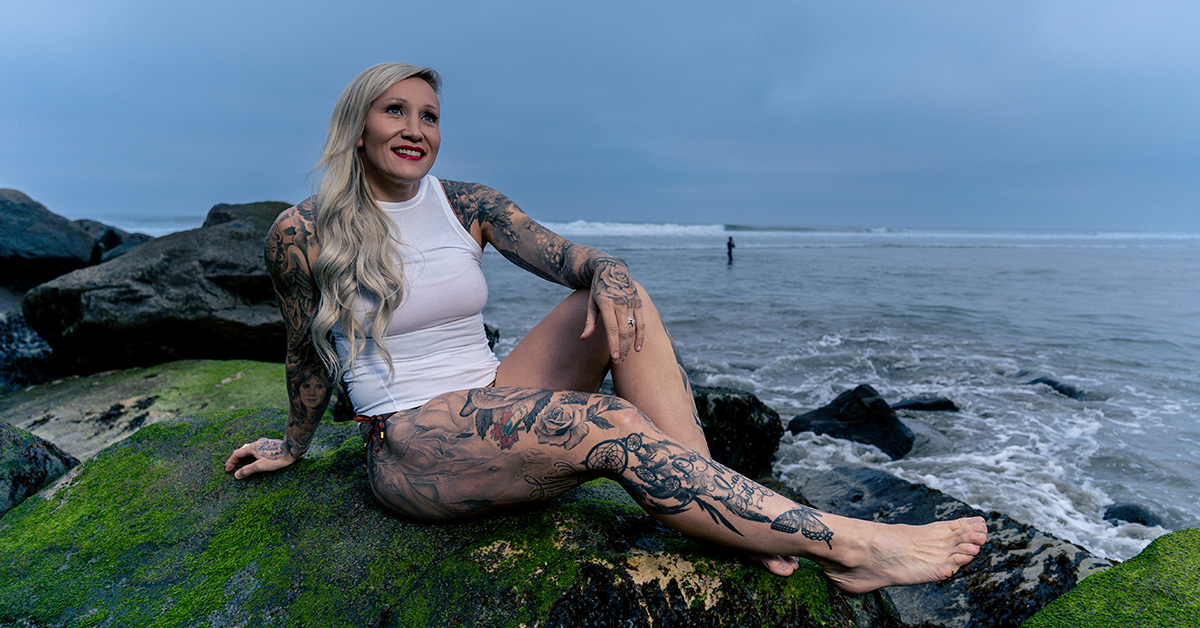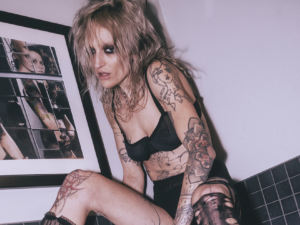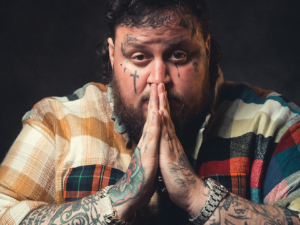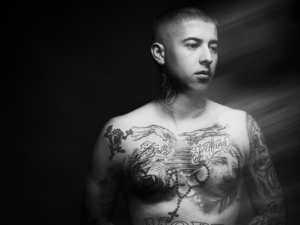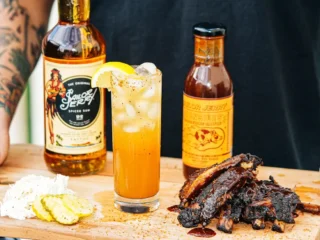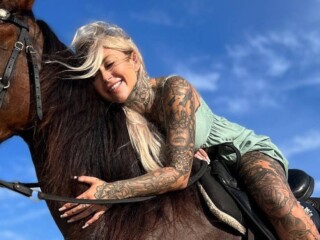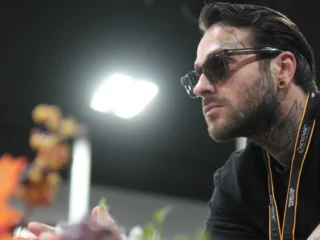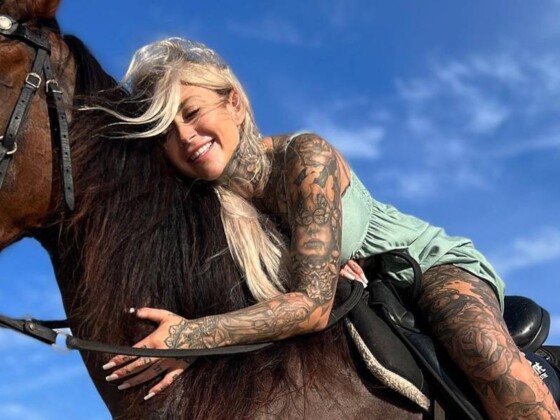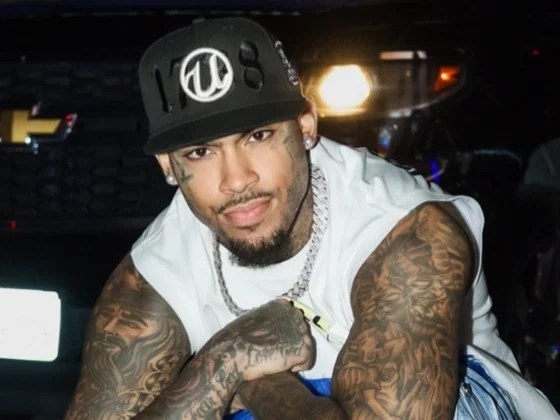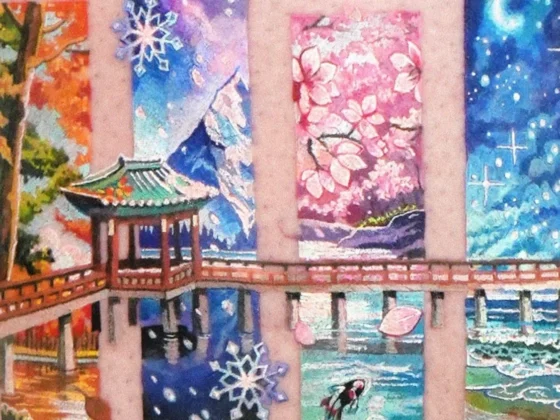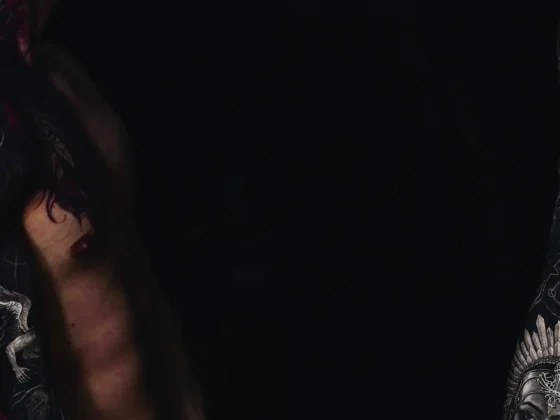Charlie Connell
February 11th, 2022
Going For Gold
After leaving Canada for the US, bobsledder Kaillie Humphries is ready to win gold for her adopted home
The Winter Olympics take place every four years, like clockwork. And every four years there are millions of people who set their eyes on one of the many niche events and think, “I can do that.” Take the bobsled. It’s so easy to sit in your easy chair, drinking a cold one and basking in the warm glow of the television, and convince yourself that with just a little motivation you could find yourself on the podium wearing a hefty gold medal around your neck. Not so fast, my friend.
Watching on TV, bobsled may look not all that different from the sledding runs you went on as a kid, albeit a supercharged version of them. But when you listen to two-time gold medalist Kaillie Humphries describe the reality of the sport we guarantee you’re not going to be wanting to try this at home.

“It starts with a full-out five-second sprint at the beginning,” Humphries explains, “so you go from zero to 50 mph over the first 50 meters and the sled weighs about 325 pounds. So you have to push a lot of weight very quickly and be able to jump in.”
From there the pilot takes control as everyone else holds on for dear life. This is where the challenge switches, in an instant, from the physical to the mental. “I have to learn every single corner of every single track,” Humphries explains. “I have to be able to execute it going 80 to 100 mph. And if I have one bad day or one slip-up, we can come crashing down.”
In Humphries’ estimation, it takes about a decade of experience to have the experience required to become a world-class pilot. But the realities of the sport—a fancy way to say that it needs to be cold—make getting on the track a possibility for only about four months out of the year. The truncated timetable means every single session counts toward building the necessary expertise. “If the ice gets too soft, even if it’s refrigerated, it becomes dangerous,” she says. “We can launch ourselves out of the track, in which case it usually ends with a fatality.”

For Humphries, the journey began in her teenage years growing up in Canada. She lived not too far from the bobsled track left over from the 1988 Calgary games, known to many within the sport and millions of sports comedy fans as the “Cool Runnings” games. While her first love was skiing, she saw that she was going to need a back-up plan if she was going to realize her Olympic dreams, and so her attention returned to that track in Calgary.
“I thought, ‘I’ve got really big legs, I’m strong for a girl and I’m reasonably fast, I’ll try it,’” Humphries recalls. “I looked it up online, went to a recruitment camp and the rest is history.”
To hear her tell it, it sounds so simple. In a way, it was, as long as you understand that there isn’t much complicated about working your ass off constantly to achieve a dream that only comes along every four years. Yeah, simple.
She was dedicated and put in all of the grueling hours required. It all paid off when she learned she had made the Canadian National Team. Obviously, this was the culmination of her dreams to compete at the highest level of her sport, but she also realized another dream on that day. She was getting her first tattoo.
“I’d wanted tattoos since I was 12 or 13 years old,” she says. “I made a promise with my parents that I would be able to get a tattoo when I made the national team. I think they made the promise when I was still skiing, knowing I wouldn’t make the national team (laughs). Then I switched to bobsled and made the national team in my first year, so I was like, ‘We get to go get tattoos.’”

Her whole family went to the tattoo shop and made a big day of it. Humphries got a tattoo of the Canadian maple leaf with a bobsled, the red ink in it being the only color tattoo in her extensive collection. Her mom also got her first tattoo that day. So did her dad. And her sister. It was a beautiful moment for the family to share in her triumph.
The tattoo sits in the middle of her quad. It’s the perfect place to show off a first tattoo, but it’s also very valuable real estate, especially if you’re planning out a leg sleeve in a completely different style. Removal was out of the question—the piece means far too much to Humphries, so it’s still there, surrounded by gorgeous black-and-grey. “It’s like a kid’s drawing in the middle of the Mona Lisa,” Humphries laughs, “but it’s a part of me.”
Making the Canadian National Team was a dream come true, but dreams don’t always last. Humphries’ career flourished as she won countless medals across all competitions to go with her two golds and a bronze from the Olympics. She even earned the honor of carrying the flag during the closing ceremony in Sochi. But despite being in the system for over a decade, Humphries no longer felt comfortable with how she was being treated.
“After the 2018 Olympics, I felt my environment was very unsafe for me,” she says. “I felt physically and mentally in danger and I knew I couldn’t continue in that environment any longer. I made it known to the federation, they did a year-long investigation and they weren’t going to make any changes with the current administration. Ultimately I didn’t feel safe moving forward and I decided I could no longer be a part of this.”

Humphries’ grandfather was American and despite still competing under the Maple Leaf, she had been a resident of the United States since 2016. Unable to walk away from her career and unwilling to compete for Canada, Humphries turned to her adopted nation for a life line. And the American team welcomed her with open arms.
“To be able to choose the environment I went into and to be accepted was so huge,” she says. “It’s a huge honor to wear the stars and stripes for me because it wasn’t something I was born into. It was something I chose and America had to choose me back. I think there’s something very empowering in that.”
In Beijing, Humphries won’t just be representing a new nation, she’ll be competing in a brand new sport as well. Previously there had been only one bobsled event for women, the two-person bobsled. For years Humphries and others within the sport had been pushing for an additional event to give women medal equity with men (who compete in both two-person and four-person events). This led to the birth of monobob.

Instead of operating as a pilot with a brakeman behind her, Humphries is all alone now. The inclusion of the event expands the opportunity for more women to make their national teams and compete, plus it helps open up the sport to smaller nations. It also presents a new challenge for the veteran athlete.
“I’ve had to focus a lot more on my strength,” she says. “It’s one thing when you’re working with a teammate, obviously two people pushing something is a lot less work. In mono, you have to be able to drive, you have to be able to push, and you have to do both at a high level in order to be able to win. Monobob has really changed the game.”
This February monobob will be taking the Olympic stage for the first time, just as Humphries represents her new country for the very first time. The moment will surely be very emotional, but make no mistake, she wouldn’t be going if she wasn’t prepared to end the games on the podium singing “The Star Spangled Banner” with about 500 grams of gold hanging from her neck.
“I am honored to represent this country and I will do so to the very best of my ability,” Humphries says, “because I want to give back to a country that has provided me with a whole new life.”
Editor's Picks
Royal & The Serpent
The hilarious and talented musician talks mental health, music, tattoos and more
Son of a Sinner
From rough-and-tumble roots to mainstream stardom, this genre-crossing musician is on a roll
A Cut Above
Celebrated barber Vic Blends can charge whatever he wants for a haircut, but all he really wants in exchange is a conversation and human connection

